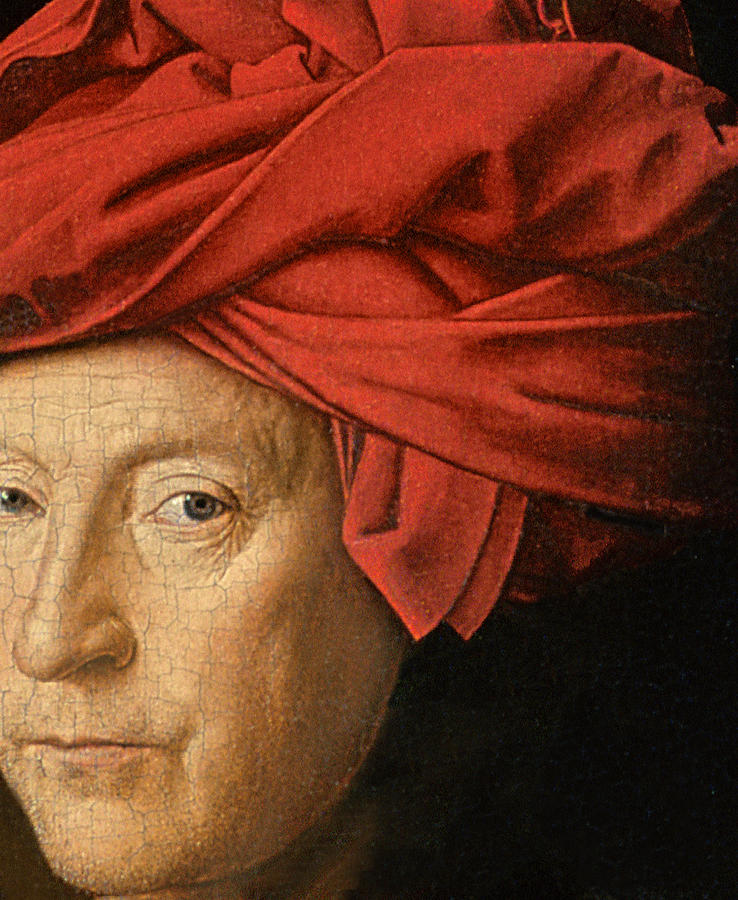
JAN VAN EYCK’S WORKS: 5 THINGS TO KNOW
Jan van Eyck’s works and some curiosities about the most influential and mysterious artist Western painting has ever had.
The perfection of Jan van Eyck’s works leaves you breathless and his technique is the forerunner of that used by many other great artists who will come after him.
In this post I’ll talk about van Eyck through 5 of his most beautiful works.
Which is your favourite painting among Jan van Eyck’s works?
Write it in your comments 🙂
Jan van Eyck’s works
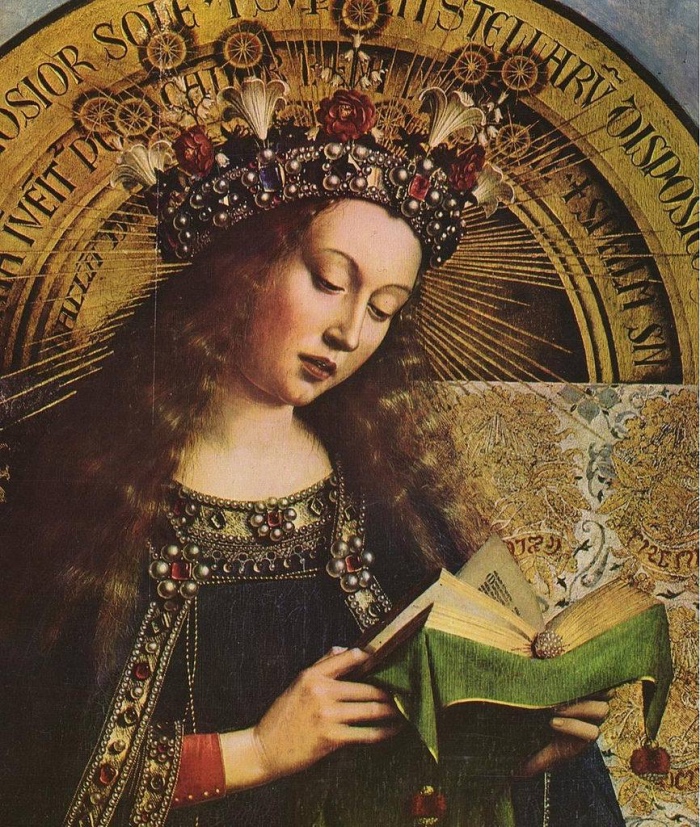
Polittico Agnello Mistico – dettaglio
1. THE ADORATION OF THE MYSTIC LAMB
Van Eyck’s most important work is “The Adoration of the Mystic Lamb” also known as The Ghent Altarpiece.
The painting, painted for the Saint Bavo Cathedral in Ghent, consists of 12 panels on which the artist worked together with his elder brother Hubert, who was a painter too.
Jan van Eyck finished the work in 1432, after the death of Hubert in 1426, and soon it was considered a masterpiece.
READ ALSO – Flemish painting: a tour among the masterpieces of Flanders
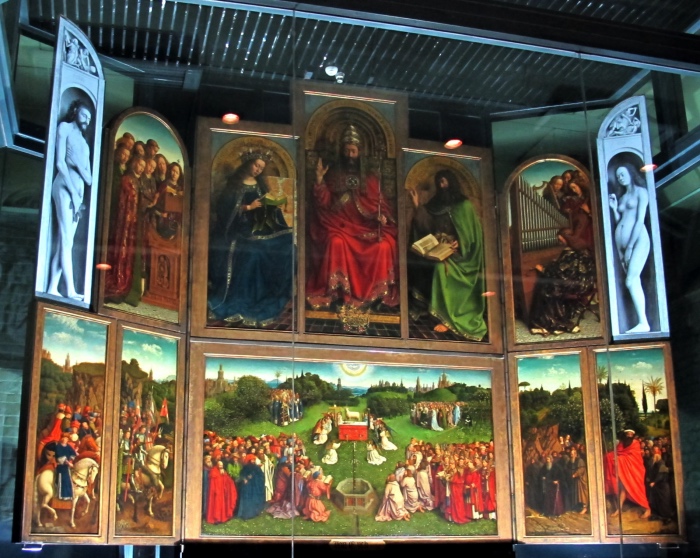
Il Polittico dell’Agnello Mistico
2. THE ARNOLFINI PORTRAIT
Jan van Eyck is the author of the very famous portrait of the Arnolfini spouses.
Giovanni Arnolfini was a rich merchant from Lucca who settled in Bruges in 1420 and commissioned van Eyck a complex painting, full of symbolic meanings and which shows the Arnolfini’s socio-economic status; the furniture, the mirror behind the characters, the lamp. The eye of the viewer lays on each detail which seems to be placed there for a specific reason.
The space of the room, in addition, is shown from a different point of view through the mirror hanging on the back wall.
READ ALSO – London what to see: the museums you must see
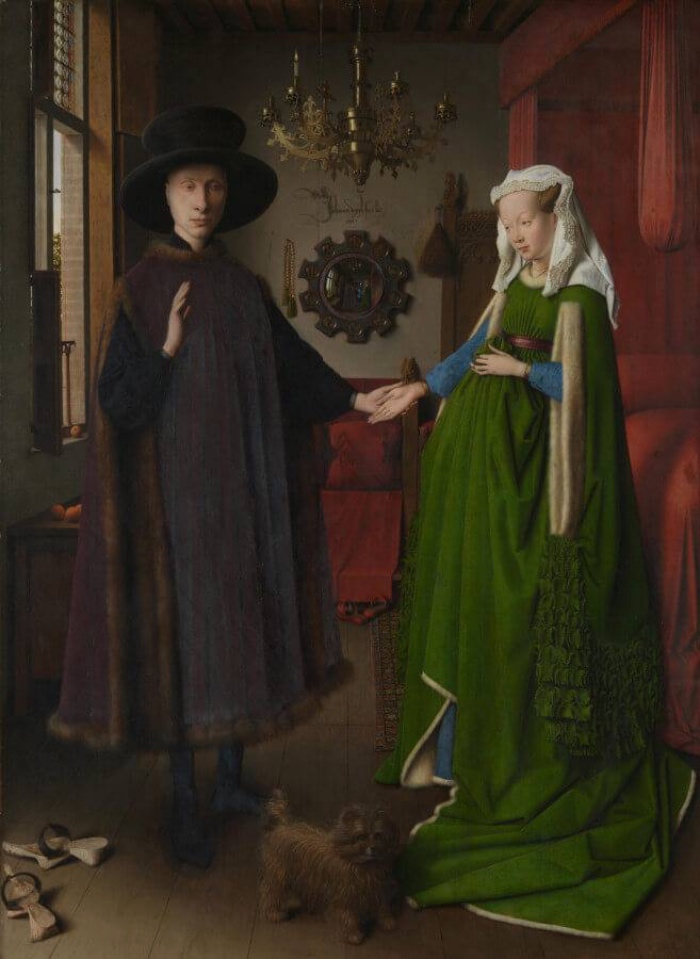
Jan Van Eyck, I Coniugi Arnolfini
3. PORTRAIT OF A MAN IN RED TURBAN
Famous for his portraits characterized by an accurate realism, Jan van Eyck was a very important artist who lived in the first half of the 15thcentury, but his life is shrouded in mystery.
There is little information about him, including his exact date and place of birth.
From the little information at our disposal we know that he probably was born between 1390 and 1400, maybe in Maastricht.
His elder brother Hubert probably introduced him to painting, but we don’t know anything about Jan’s training.
This portrait is one of van Eyck’s most famous portraits, and according to many people is a self-portrait.
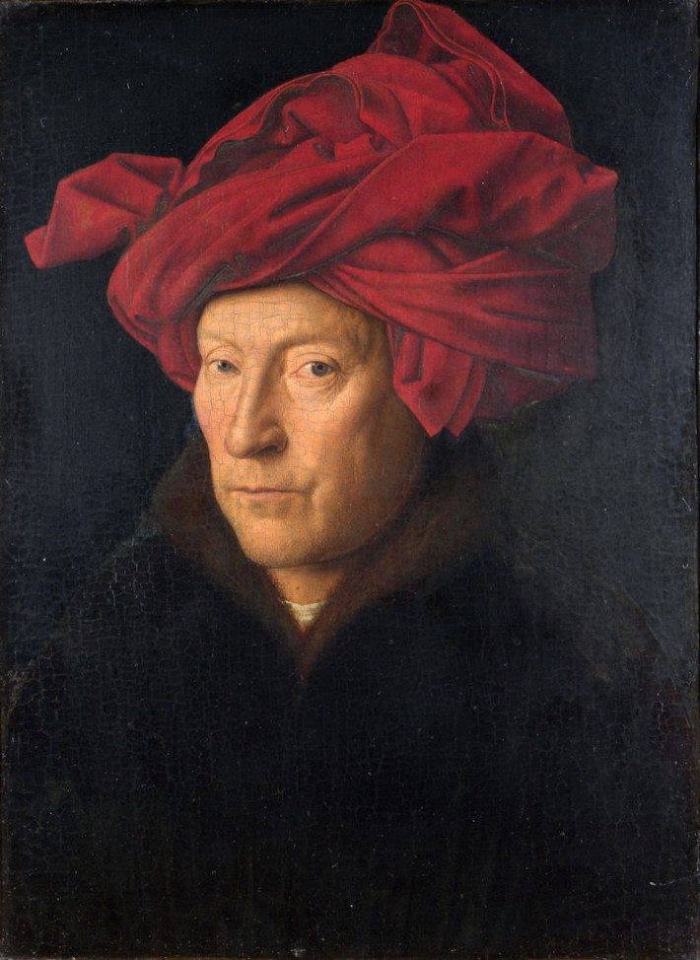
Jan van Eyck, Ritratto di uomo con turbante rosso (1433)
4. PORTRAIT OF MARGARET VAN EYCK
The importance of Van Eyck’s painting lies in some fundamental elements:
– the light, comparable in importance to the perspective of Italian painting;
– the importance of details in relation to the whole painting. While Italian paintings have to be considered first as a whole and then you can go into detail, van Eyck’s painting has to be read starting from the details and then you can consider the whole painting.
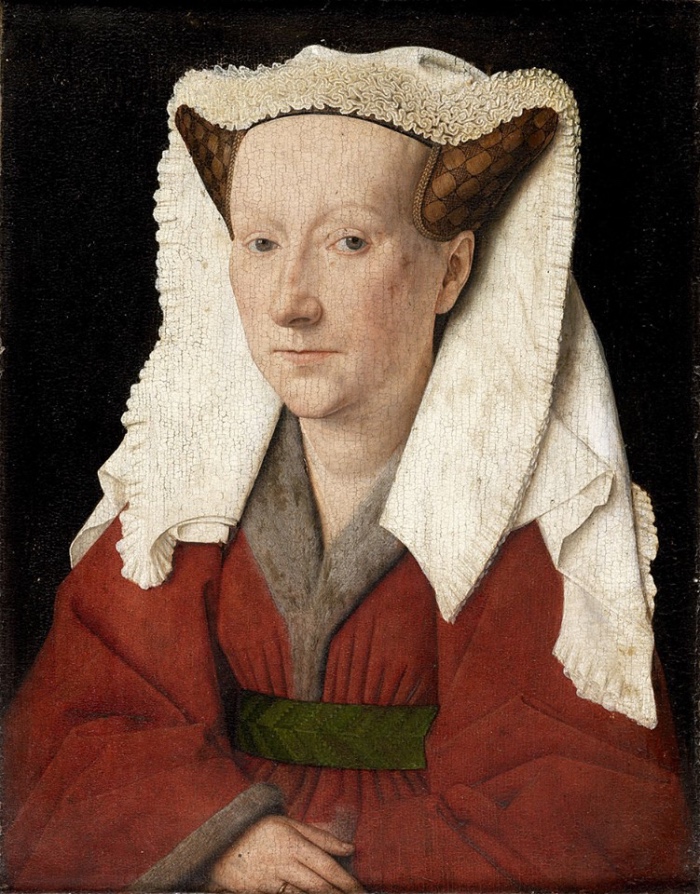
Jan Van Eyck, Ritratto di Margareta van Eyck (1439).
5. PORTRAIT OF A MAN WITH A BLUE CHAPERON
Van Eyck’s oldest portrait dates back to 1429 and depicts a man wearing a fur jacket and a refined blue hat.
Probably around 1430 he made a trip to Italy and his presence in Florence seems certain, where he had the chance to see “The Adoration of the Magi” by Gentile da Fabriano and the frescoes of the Brancacci Chapel by Masaccio and Masolino.
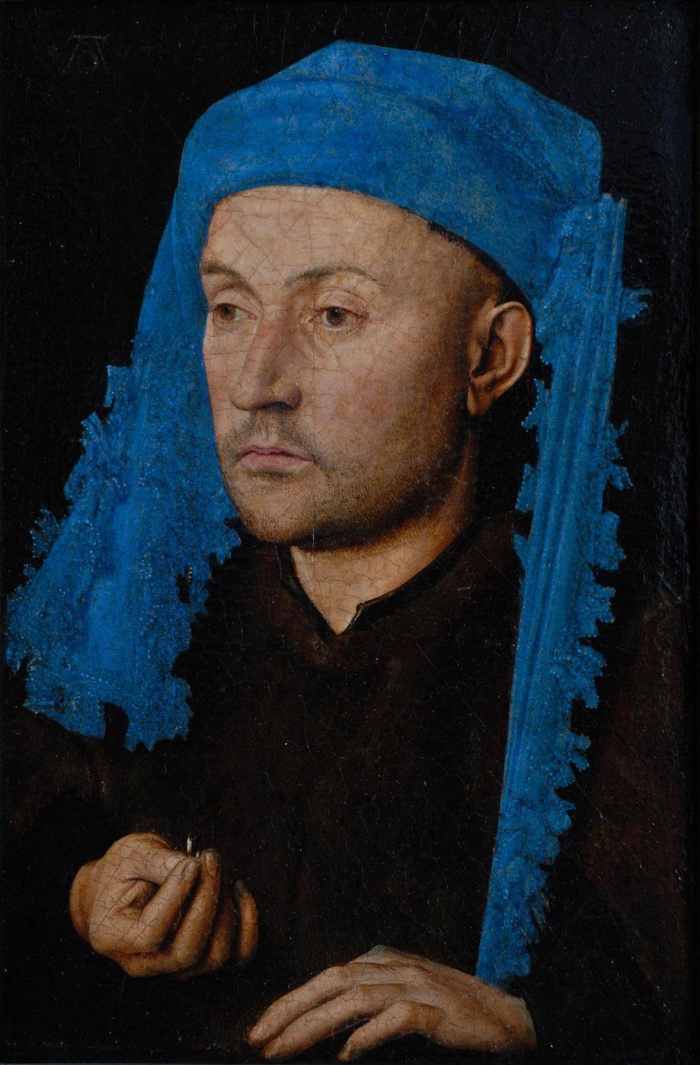
Jan van Eyck, L’uomo dal turbante turchese e anello (1429 circa).
READ ALSO – Renaissance artist’s workshop


Da sempre il mio prefetito è i coniugi Arnolfini, per il trucco dello specchio!
Credo sia il dipinto più bello ma anche quello che l’immagine fotografica riesce a riprodurre meglio. In realtà, se visto dal vivo, tutte le opere di van Eyck sono intense e affascinanti. Ammetto che dopo aver visto il Polittico dell’Agnello Mistico a Gent ora è quell’opera la mia preferita dell’artista. Ma ho dovuto vederla da vicino per cambiare idea.
il mio preferito e che vorrei che mi fosse raccontato e spiegato è Angeli Cantori
Polittico della Cattedrale di Gand
grazie
Opera complessa ma meravigliosa.